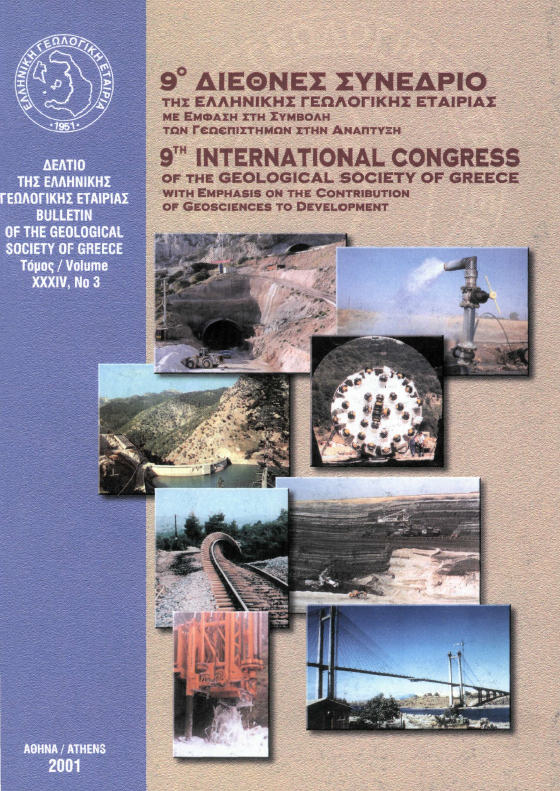Τα επίπεδα και η πιθανή προέλευση των βαρέων μετάλλων στα επιφανειακά ιζήματα της λίμνης Βεγορίτιδας

Περίληψη
Η κατανομή βαρέων μετάλλων στα επιφανειακά ιζήματα της λίμνης Βεγορίτιδας είναι συνάρτηση των κύριων πηγών προέλευσης τους (ιπτάμενη τέφρα, ποταμός Σουλού, υπερβασικά και μεταμορφωμένα πετρώματα). Τα επίπεδα των περισσότερων βαρέων μετάλλων είναι χαμηλά, λόγω φυσικού αυτοκαθαρισμού που οφείλεται στο μικρό χρόνο ανανέωσης των νερών της, με εξαίρεση τα Ba (γεωγενους προέλευσης), &(κύρια γεωγενούς προέλευσης), Ni (γεωγενούς/ανθρωπογενούς προέλευσης) και As (εμπλουτισμός κύρια μέσω της ιπτάμενης τέφρας). Προτείνεται λεπτομερής περαιτέρω μελέτη όσον αφορά το Cr και το As.
Λεπτομέρειες άρθρου
- Πώς να δημιουργήσετε Αναφορές
-
ΣΚΟΥΛΙΚΙΔΗΣ Ν. Θ. (2001). Τα επίπεδα και η πιθανή προέλευση των βαρέων μετάλλων στα επιφανειακά ιζήματα της λίμνης Βεγορίτιδας. Δελτίο της Ελληνικής Γεωλογικής Εταιρείας, 34(3), 1123–1130. https://doi.org/10.12681/bgsg.17172
- Ενότητα
- Γεωχημεία

Αυτή η εργασία είναι αδειοδοτημένη υπό το CC Αναφορά Δημιουργού – Μη Εμπορική Χρήση 4.0.
Οι συγγραφείς θα πρέπει να είναι σύμφωνοι με τα παρακάτω: Οι συγγραφείς των άρθρων που δημοσιεύονται στο περιοδικό διατηρούν τα δικαιώματα πνευματικής ιδιοκτησίας επί των άρθρων τους, δίνοντας στο περιοδικό το δικαίωμα της πρώτης δημοσίευσης. Άρθρα που δημοσιεύονται στο περιοδικό διατίθενται με άδεια Creative Commons 4.0 Non Commercial και σύμφωνα με την οποία μπορούν να χρησιμοποιούνται ελεύθερα, με αναφορά στο/στη συγγραφέα και στην πρώτη δημοσίευση για μη κερδοσκοπικούς σκοπούς. Οι συγγραφείς μπορούν να: Μοιραστούν — αντιγράψουν και αναδιανέμουν το υλικό με κάθε μέσο και τρόπο, Προσαρμόσουν — αναμείξουν, τροποποιήσουν και δημιουργήσουν πάνω στο υλικό.


